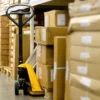The problem of returns is one that presents a challenge for many retailers, particularly those in the world of eCommerce.
Whether you sell fashion items, homeware or electricals how do you better manage the process in a cost-effective way while keeping customers happy?
Only a tiny percentage of products returned are defective, which illustrates that the returns process is just a natural phase in the customer buying cycle. You can’t eliminate returns completely because it’s a vital part of your business.
Some companies have gone so far as to disincentivise the returns process, either by having a small window of opportunity to return items, customised purchasing that only allows a return if the product is defective or non-refundable fees associated with restocking. These practices however can harm your business, encouraging shoppers to look elsewhere to shop with a company who have a more favourable returns process.
The Problem of Retail and Ecommerce Returns
The rate of returns is increasing at an alarming rate. As more brands strive to compete online, this is placing a huge amount of pressure on businesses not just from a financial perspective, but from a resource one too. There are many problems associated with the returns process including:
The Environment
With businesses having to stock a vast amount of products, some of these will be returned. Excess inventory, particularly in the fashion and electronics industries, causes huge problems for the environment, mainly because most of the excess is sent to landfill which can have a catastrophic impact on the environment, from toxic waste to harming wildlife.
Expectations
Customers expect businesses to offer a returns process. The easiest option for businesses would be to abolish the returns process completely, but this can have a significant impact on customers. Many consumers expect and will in fact base their buying decisions on whether a returns process exists. Returns are fundamental to customer satisfaction and long term loyalty, so it would be detrimental for a business to remove this option for customers.
Returns Management
The process of returns must be well managed. It’s a complex operation that must be well run and efficient. Customers don’t like to be kept waiting days or weeks for their returned items to be processed and their refunds issued. Consideration must be given to reverse logistics and the supply chain, from receipt of the returned item through to refund processing and recirculation. Many businesses face an ongoing battle of what to do with returned stock.
Throughout the retail industry, businesses are becoming more and more savvy in effectively managing returns to turn them into a profitable operation.
There are lots of retailers who already liquidate open box or used customer returns. This method is to simply sell inventory in bulk loads. While these sales only recover a fraction of the retailer’s product cost they are an effective way to process returns. Technology has greatly increased the efficiency of returns allowing businesses to reduce the costs associated with direct to consumer reselling. Technology has also enabled retailers to connect to dedicated third-party marketplaces who specialise in this type of inventory and often, who have large audiences ready to buy.
One of the viable options to all of these problems that will reduce costs, eliminate waste and maintain the attractiveness of returns for customers is the concept of eCommerce or The Circular Economy.
One of the complexities associated with reverse logistics arises from the unpredictability of customer returns both in terms of frequency and volume. Customers will return all kinds of products in different conditions it can be difficult to implement a standardised warehouse process to optimise productivity. Some retailers are addressing this issue ensuring that staff are properly trained in reverse logistics. This includes procedures for receiving diverse items and processes for testing, grading and refurbishing inventory. When software is used in combination with these techniques, it makes the process even more profitable.
The Circular Economy
Within the circular economy, everything has a perceived value. From packaging to returned items, nothing will end up in landfill. To put in place the circular economy it will involve carefully planning reverse logistics. This would include how the goods are returned or collected, where they will be taken to, the method of sorting and then planning how they will be remanufactured, refurbished, reused or recycled. It can also involve the provision of incentives to customers for returning products that they no longer want or need, or those that have reached the end of their use or life.
Sustainable Retail
Retailers can end up throwing away as much as a quarter of returned items and this is a lot of money for businesses that ends up in landfill. For the remaining percentage that doesn’t end in landfill, businesses have to decide what happens next, whether it’s inspected and immediately restocked or refurbished, repackaged and resold. Returns can be turned into an opportunity to generate revenue for businesses such as second-hand selling, renewal or upcycling. The more sustainable you can be, the more attractive your business will be to consumers as it shows that you care about the environment.
The returns process is becoming increasingly complex, but if businesses are to use it to their advantage and turn it into a profitable enterprise, they must be willing to embrace concepts such as the circular economy and sustainable retail. Many products can be restocked or resold. When it comes to electronics this can be refurbished and resold.
Retailers are constantly looking for new and creative ways to turn their returns into a profit and using marketplaces that specialise in returned items or upcycling, refurbishing and renewing items is one of the best ways to achieve this while still offering customers the returns process they require.
Keeping shoppers happy is one of the most effective ways that you can increase retention and loyalty, but through an efficient returns process, you can turn it into a profitable operation rather than one that makes a loss in your business.



